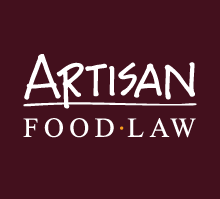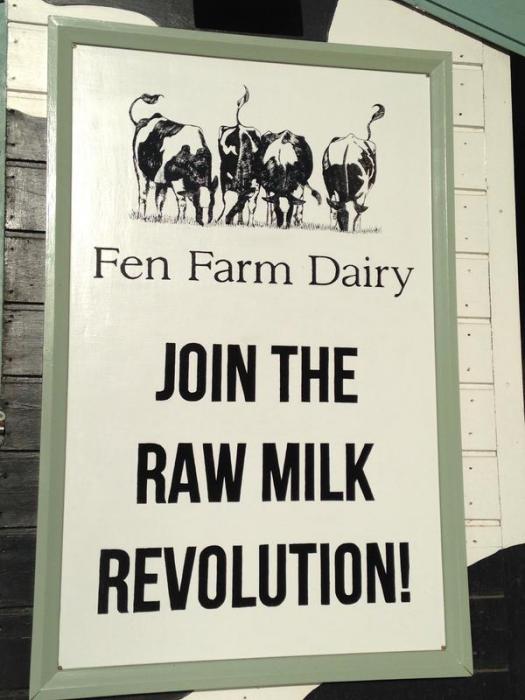Are we entering the Golden Age of raw drinking milk?
It has been striking to note the rise in recent months of the number of dairy farmers in England, Wales and Northern Ireland who are turning to the direct sale of raw drinking milk. Mostly, it seems, by means of on-farm raw milk vending machines. In March this year there was a total of 114 producers of raw drinking milk registered with the Food Standards Agency (FSA), a figure which has now risen to 158, an increase of almost 39% in a little over six months.
The decline in milk prices and increased production are seen as drivers for the growth of raw milk vending machines across Europe. Many see these machines as helping farmers steer through the dairy crisis by providing an alternative route to market at a more favourable price.
While the long established and pioneering Fen Farm Dairy in Suffolk embarked on an ambitious expansion of raw milk products it has also helped others move into the raw milk market.
In the early part of this year dairy farms in Hertfordshire, Nottinghamshire, West Yorkshire and Shropshire started to produce raw milk. Along with Naked Milk in Lancashire, a farm in Warwickshire and at Barton Farm in Lancashire a state-of-the-art robotic milking system has been newly installed for the production of raw drinking milk.
The BBC’s Countryfile Live 2016 at Blenheim Palace in Oxfordshire last August clearly provided a boost when Richard Park from Low Sizergh Farm near Kendal in Cumbria picked up a 2016 National Trust Fine Farm Produce award for diversifying into raw milk. The awards celebrate the very best produce from the National Trust’s 1,500 tenant farmers and estates across England, Wales and Northern Ireland. It would appear to have sown the seeds of an idea or at least encouraged those dairy farmers already contemplating a move into raw milk.
More recently other dairy farms have taken this route, including farms in North Dorset, the first raw milk vending machine in the North East in County Durham, Lancashire, Buckinghamshire, Surrey and another farm in the Cumbrian Lake District.
The FSA maintains the register of raw drinking milk producers and is responsible for carrying out dairy hygiene inspections, supervising sampling programmes and generally enforcing the controls under both domestic and EU legislation. The current controls provide that:
a) Raw drinking milk may only be sold direct to consumers by registered milk production holdings (at the farm gate or in a farmhouse catering operation), at farmers’ markets (by the farmer) or by a distributor from a vehicle used as a shop premises (a milk round).
b) Milk must come from healthy animals and the herd must be free of both brucellosis and tuberculosis.
c) The dairy must comply with hygiene rules.
d) The container is which milk is supplied must bear the appropriate health warning.
e) Compliance with food safety and hygiene requirements is monitored through twice-yearly inspections.
f) Milk is sampled and tested quarterly by Dairy Hygiene Inspectors to monitor compliance with microbiological standards.
The Food Standards Agency awards each producer with a compliance rating following on-farm official control inspections which are updated as necessary. The rating refers to the hygiene conditions of the milking process on the farm at the time of inspection:
- Good: The dairy has only minor, if any, non-compliance which is quickly rectified. The compliance history for the premises is good and the Dairy Hygiene Inspector (DHI) has a high level of confidence in the farmer’s ability and willingness to control the risks associated with raw drinking milk.
- Generally Satisfactory: Minor non-compliance which does not present a risk to food safety and the DHI has confidence in the farmer’s ability but seeks more reassurance of their willingness to control risks.
- Improvement Necessary: Safety and hygiene requirements not generally met and breaches compromise hygiene standards and/or breaches of a more minor nature have not been sufficiently addressed following previous requests. The DHI has a low level of confidence in the farmer’s ability and willingness to control risks.
- Urgent Improvement Necessary: Non-compliance poses a risk to health and formal enforcement action is appropriate.
The dire financial situation which many dairy farmers face means raw drinking milk could offer a lifeline. The opportunity to move away from the below cost of production commodity price for milk and obtain a price which reflects the true cost and value of milk must be attractive. This must not, however, be the sole driving force in the growth of the raw drinking milk market. Dairy farmers who take this route must have an understanding of the nature, benefits, composition, risks and history of raw drinking milk, simply taking advantage of what may be seen as a premium price could have dire consequences for all those engaged in the supply of raw drinking milk.
Consumers also have a role to play in understanding raw milk, the benefits it offers and the care needed in production. In doing so consumers can help ensure that high standards are maintained in the future and, in particular, make it clear to producers that nothing less than a ‘Good’ compliance rating is acceptable.
On the bright side, we may well now be entering the Golden Age in the availability of high quality raw drinking milk. Now, wouldn’t that be great?





